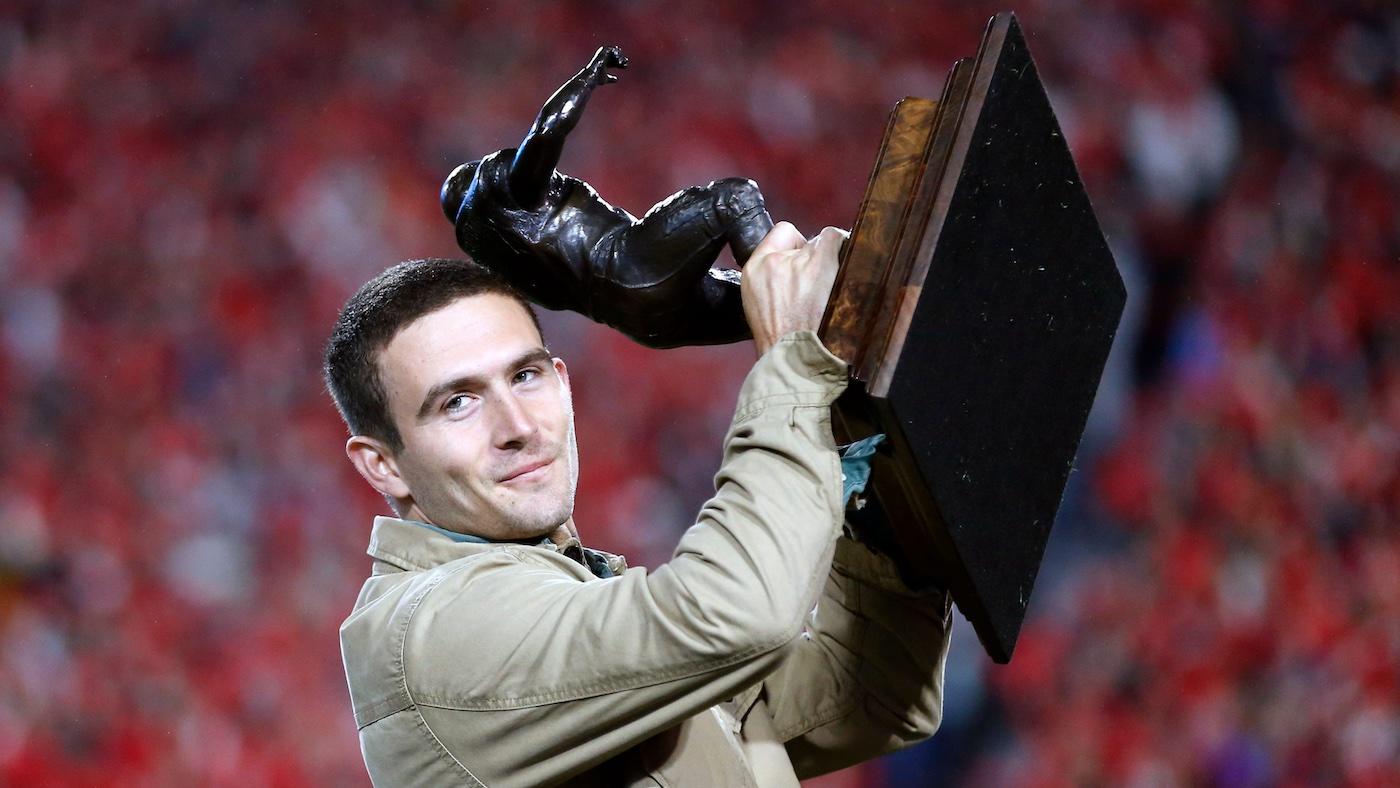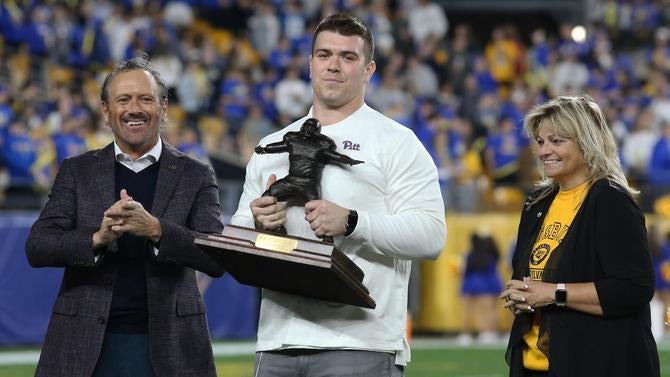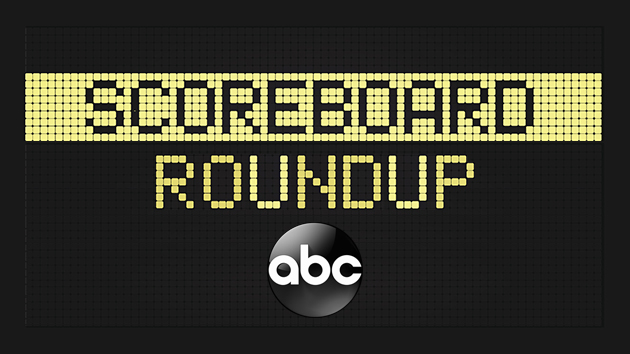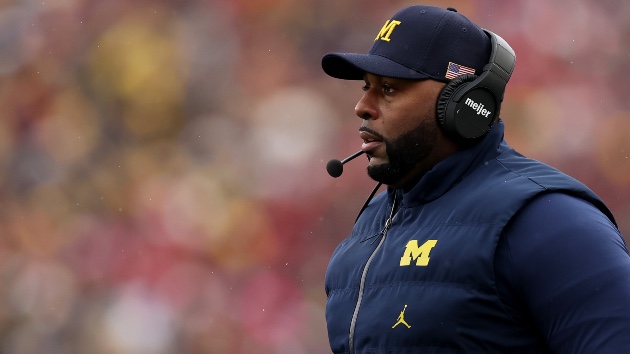Ex-college football walk-ons conflicted as House v. NCAA settlement leaves future uncertain for underdogs
Written by CBS SPORTS ALL RIGHTS RESERVED on July 31, 2024

Walk-ons hold a legendary place in college football lore. There’s the story of Rudy Ruettiger, a pint-sized defensive end who was carried off the field by teammates at Notre Dame. Clemson’s Dabo Swinney, a two-time national championship-winning coach, started his career as a walk-on for Gene Stallings at Alabama before launching a legendary coaching career. Oklahoma’s Baker Mayfield became the first former walk-on to win the Heisman Trophy in 2017 and was selected No. 1 in the NFL Draft.
“They’re the fabric of college football,” Burlsworth Trophy chairman Marty Burlsworth told CBS Sports. “That term is iconic, just as quarterback or first down.”
For the Burlsworth family, the story of walk-ons is personal. Brandon Burlsworth, Marty’s brother, is regarded as one of the greatest walk-ons of all time. After visiting his in-state Arkansas Razorbacks, Burlsworth turned down smaller offers to walk on at his dream school in 1994. He went on to develop into an All-American offensive guard and was selected in the third round of the NFL Draft.
Eleven days later, Burlsworth tragically died in a car accident. His family helped found the Burlsworth Trophy, which is presented to the top player in college football who started his career as a walk-on.
“I remember visiting and getting to see his name over his locker,” Marty Burlsworth said. “I’m like, wow, that’s the ultimate. In Arkansas, it’s all Razorback, Razorback through and through the state. Just to be able to throw that jersey on for young men, to be able to put that jersey on … and be part of that team is an incredible thing.”
Unfortunately, that opportunity could soon change. The House v. NCAA settlement that was filed last week is expected to ultimately push the NCAA to cap football rosters at 105 slots, all of which will be eligible for recruited scholarship players. It’s unclear what teams would be willing — or able — to fill every eligible spot, but it’s rare that the big-money teams in college athletics fail to leverage advantages. With it, the opportunity for non-FBS athletes to don their beloved jerseys becomes far more difficult.
“When I first heard the rumor of it, it was just disbelief, that it would be crazy,” Burlsworth said. “A lot of our winners are high profile with great success. It’s just unbelievable that it would even be considered to eliminate that type of opportunity for players. It’s mind boggling, is the best way to put it, that it would even be considered.”

If the trophy is diminished by the game evolving, it will be disappointing for an award that has truly found the best and brightest in recent years. Heisman winner Baker Mayfield won the award in back-to-back seasons. Two-time national champion quarterback Stetson Bennett IV captured the award in 2022. NFL starting QB Aidan O’Connell was a finalist his last year at Purdue. Former Clemson wide receiver Hunter Renfrow won the award and went on to post a 1,000-yard season with the Raiders.
Former Washington State quarterback Luke Falk didn’t have any FBS offers coming out of high school. When an opportunity to join Mike Leach as a walk-on opened, he jumped at the opportunity. Falk was deemed not good enough for the scout team as a first-year player but ultimately threw for nearly 15,000 yards and was a three-time Burlsworth finalist before winning the award in 2017.
“I think for me, that award is the best award in college football,” Falk told CBS Sports. “I’ve shown people the plaque I had in my office and there’s such admiration for that award now because I think people have such a healthy respect for the walk-on way and people that succeeded like that.”
Granted, the issues addressed in the settlement are real. In 2024, multiple well-monied schools reportedly used NIL money as a replacement for scholarships, essentially increasing their recruited roster size over comparable foes. With unlimited rosters, there’s theoretically no limit to the amount of talent that SEC and Big Ten teams could horde financially.
Putting a cap of 105 on the entire roster allows schools to dramatically expand their scholarship roster but limits them from using NIL to circumvent the rules. Ultimately, though, this is the tradeoff.
“Everybody loves the underdog stories,” former Clemson walk-on William Cockerill said. “You’re going to lose those big-time stories of your Hunter Renfrows, your Baker Mayfields, the Clay Matthews, J.J. Watts — these are walk-ons and became household names. You’re going to lose a little bit of that because saying a guy who’s at the bottom of the roster doesn’t have the same allure as being a walk-on.”
Cockerill ironically grew up a die-hard South Carolina fan despite an upbringing with plenty of Tigers in his family. People joked that he was a traitor when he ultimately accepted a preferred walk-on spot at Clemson. A decade later, Cockerill’s family and kids are deeply invested in the Tigers.
And really, the downstream effects of eliminating walk-ons might be the most overlooked. Just one member of a local family dressing out for a football game can build a bond that lasts generations. There’s countless ways that can pay off. Billionaire Mat Ishbia walked onto the Michigan State basketball team. His money has dramatically aided the Spartans basketball program.
While losing true walk-ons would be a shot in the heart of college football, there are ways to make the new legislation work. Schools could leave a certain number of active roster slots available for walk-ons to try out and earn. They could still use a preferred walk-on approach but with various amounts of scholarship dollars. While the proposed legislation leaves open having unlimited rosters in the spring, though, nothing quite matches dressing out for game day.
“The crazy thing is, there’s not many coaches that want 105 scholarships,” Swinney said, according to 247Sports. “We want to keep our walk-ons. It’s hard to manage that many guys. When you have that many guys on scholarship — you think you’ve got transfers now, wait ’til that number gets there. It’s going to be a lot. It’s going to change a lot of things.
“Kids that just want to be a part of it, that want to come help you practice in practice — it saddens me that that is probably going away.”
Overall, former walk-ons were encouraged by the new opportunities created by expanded scholarship rosters. If every Power Four team added 20 slots, it would create more than 1,300 scholarships. At the same time, there was an understanding that especially at their favorite or most proximate schools, these opportunities wouldn’t go to players like them.
“We had a number of our starters that started their career as walk-ons and they probably wouldn’t have been in the 105,” Falk said. “They were kids that were raw material and needed to have an opportunity and had the potential to grow into a good player.”
The Burlsworth Trophy has had zero conversation about editing or changing the award in the event walk-ons disappear. There are still players with multiple years of eligibility who started their careers as walk-ons, so the trophy is set for at least a few more years. If the changes go through, Marty Burlsworth hopes college football quickly comes to its senses before the award has to make any long-term tweaks.
The NCAA’s response to the House v. NCAA settlement is still in the works, meaning walk-ons across the country should be safe for the 2024 season. Thousands of FBS walk-ons across the country will get up at the crack of dawn to train this season without any guarantee of playing time or opportunity. For now, all they can do is work.
“That’s the story of America, right?” Cockerill said. “Being able to make something out of nothing, land of opportunity – football is that way too. It stinks to feel like we’re kind of a Last of the Mohicans now.”
The post Ex-college football walk-ons conflicted as House v. NCAA settlement leaves future uncertain for underdogs first appeared on OKC Sports Radio.





